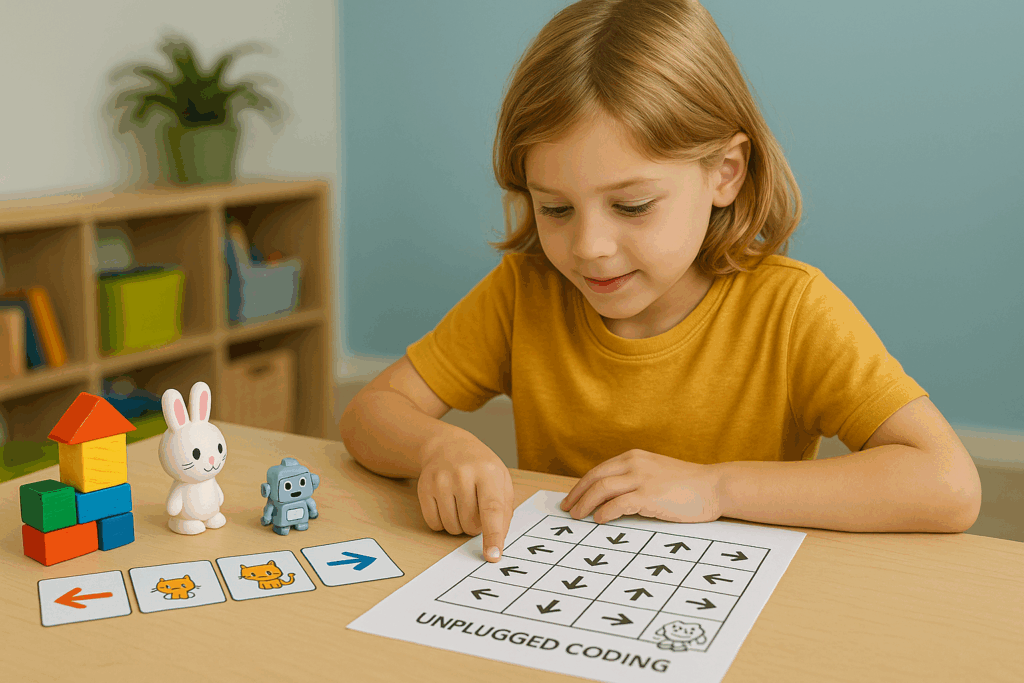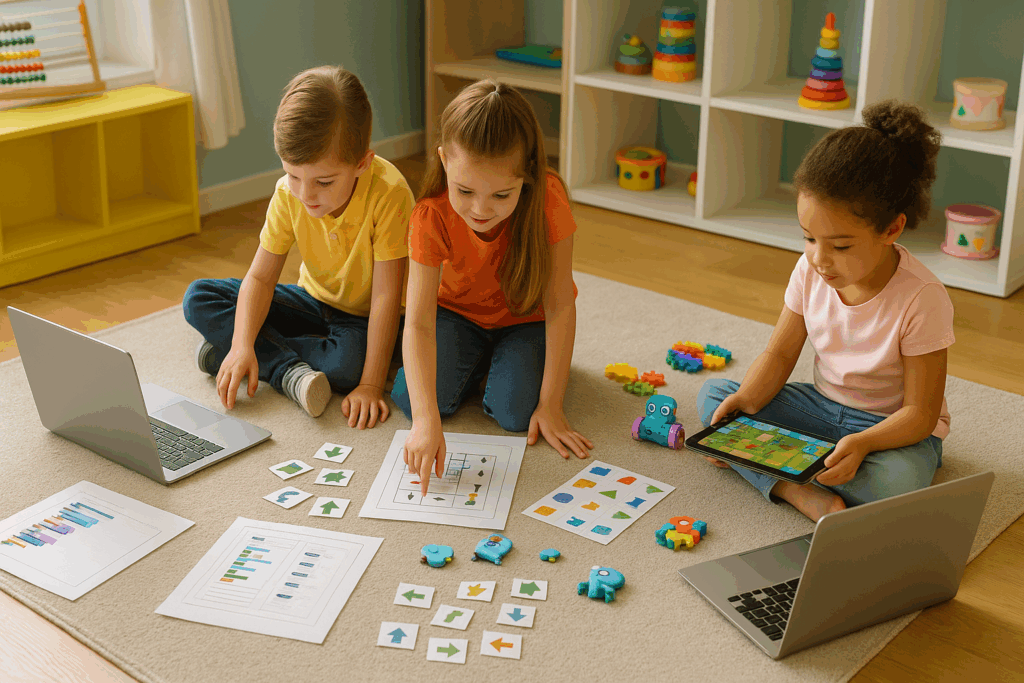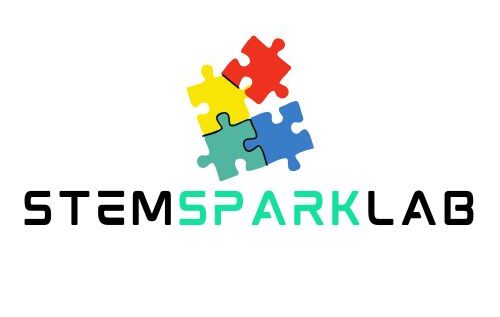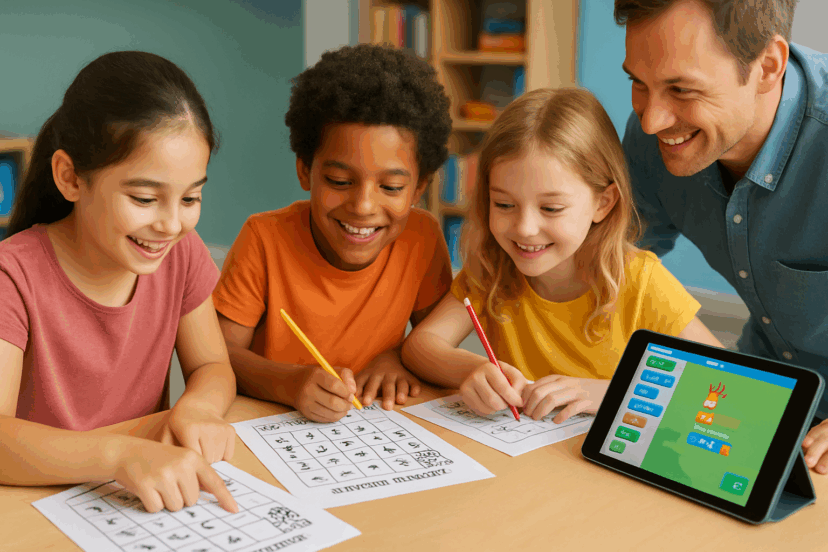Coding for Kids Worksheets: Simple and Fun Projects to Introduce Programming
We may earn a commission for purchases made using our links. Please see our disclosure to learn more.
If you’re searching for a creative way to introduce children to programming, coding for kids worksheets can be your secret weapon. In today’s tech-driven world, coding has become as fundamental as reading and math. But how do you teach a young child to code—without it feeling like another homework assignment? Worksheets designed for kids blend fun with foundational skills, making programming accessible, hands-on, and even playful.
Let’s explore what makes coding worksheets for kids so effective, how to use them, and where to find the best resources to jumpstart your child’s journey into the world of code.
Why Coding Worksheets Matter for Kids
The majority of children are not yet prepared to start creating apps or using sophisticated software. Because they simplify programming concepts into easy, entertaining exercises, coding worksheets are quite beneficial. Worksheets gently and approachably expose children to fundamental ideas like logic, sequencing, and problem-solving through games, riddles, and commonplace items.
Coding worksheets might be compared to the training wheels of programming. Before taking on more difficult tasks, they assist children in developing a strong foundation and boosting their self-esteem. The best part is that you can get started without any expensive equipment or technical knowledge. All you need is a spirit of fun and curiosity!
What Are Coding for Kids Worksheets?
Coding worksheets for kids are learning tools—available in both printable and digital formats—that help introduce programming fundamentals. They cover everything from easy matching activities for little ones to challenging logic puzzles for bigger kids. Some tasks might involve drawing arrows to move a character, while others use drag-and-drop coding blocks on a screen.
What really makes these worksheets special is their interactive, hands-on style. With bright visuals, engaging stories, and fun challenges, they turn abstract coding concepts into something kids can see and touch. Plus, many worksheets are designed for independent learning, so children can explore and progress at their own pace.
Benefits of Early Coding Education
Introducing programming through worksheets isn’t just about future job skills. Here are a few big benefits:
- Problem-Solving Skills: Coding worksheets teach kids to break down problems, try new solutions, and learn from mistakes.
- Logical Thinking: Activities require children to follow steps, identify patterns, and organize their thoughts.
- Creativity: Coding isn’t only technical—worksheets often include storytelling and art, sparking the imagination.
- Confidence: As kids complete worksheets, they experience small wins that build self-esteem.
- Digital Literacy: Early exposure prepares kids for technology’s role in school and life.
When children see programming as a game instead of a chore, they’re more likely to stick with it—and develop valuable lifelong skills.

Types of Coding Worksheets for Kids
Not all worksheets are created equal. Let’s break down the main types you’ll find, so you can choose what works for your child.
Printable Worksheets
These are classic, hands-on activities you can print at home. Printable coding worksheets usually use symbols, arrows, and coloring to teach sequencing, loops, and logic. Kids might help a robot reach its goal by drawing a path, or decode secret messages by following a pattern. Printable options are great for screen-free learning and are easy to take anywhere.
Interactive Digital Worksheets
With tablets and computers so common, many parents choose digital coding worksheets. These can be more interactive, with instant feedback and animated challenges. Many popular coding platforms offer beginner-friendly, gamified worksheets that teach basic coding skills using drag-and-drop blocks. Digital options can scale up in complexity, adapting to your child’s pace.
Unplugged Coding Activities
Sometimes, the best worksheets don’t require a screen at all. Unplugged coding worksheets use real-world objects (like LEGO bricks or even snacks) to illustrate programming concepts. These activities are especially good for younger children or group settings, keeping things tactile and social.
Scientific Research: Why Coding Worksheets Really Work
You might be wondering if all this buzz about coding for kids worksheets is truly backed by research. The answer is a resounding yes! Multiple studies highlight the real-world impact of introducing programming at an early age—and they provide strong support for using worksheets, apps, and hands-on activities as learning tools.
Systematic Review: Early Childhood Education Programming
A Systematic Review: Early Childhood Education Programming found that coding activities—including worksheets—are not just feasible but highly effective for children as young as three. The review emphasized that coding can be woven into daily classroom routines or home play, blending seamlessly with art, music, and math lessons. It also noted the importance of teacher and parent support, but made it clear: when children learn to code through playful, structured activities, they’re building the foundation for strong problem-solving and logical thinking skills.
Coding Apps and Computational Thinking
Another significant study examined the impact of coding apps on young children’s computational thinking and creativity. Reviewing a range of popular apps—like ScratchJr—this research confirmed that digital worksheets and coding games reliably help kids develop computational thinking skills. Even more exciting, open-ended tools (where children can create their own stories or challenges) seem to foster greater creativity and deeper understanding than rigid, step-by-step activities.
What This Means for Parents and Educators
Together, these studies make it clear: coding worksheets and apps are more than just busywork. They’re a proven way to build essential skills that kids will use throughout their lives, both in and out of the classroom. Whether you start with printable worksheets, unplugged activities, or an interactive app, you’re giving your child a head start in logic, creativity, and confidence.
How to Use Coding Worksheets Effectively
To get the most from coding for kids worksheets, keep these tips in mind:
- Start Simple: Choose worksheets that match your child’s age and experience. Early wins are motivating!
- Be Consistent: A few minutes several times a week works better than occasional marathon sessions.
- Make It Social: Pair siblings or friends together for group challenges.
- Celebrate Progress: Sticker charts, completed worksheet binders, or sharing finished work with family members add positive reinforcement.
- Mix It Up: Alternate between printable, digital, and unplugged worksheets to keep things fresh and fun.
- Explore Related STEM Topics: Coding can spark curiosity in all areas of STEM. Try activities like building a long-range drone for kids or experimenting with robotics to broaden their learning experience.
Encourage your child to talk through their logic or narrate their choices out loud. You’ll be surprised how much kids learn just by thinking aloud and making mistakes in a safe environment.
Top Tips to Make Coding Fun for Kids
You don’t need to be a programmer to nurture your child’s coding skills. Here’s how to make the most of worksheet-based learning:
- Gamify the Experience: Turn worksheets into a game or race against the clock.
- Reward Curiosity: Celebrate when your child asks “what if” and explores new solutions.
- Use Real-Life Examples: Connect worksheet puzzles to daily life—like following a recipe (sequences) or setting the table (loops).
- Stay Positive: If your child gets stuck, guide them with questions instead of jumping in with answers.
- Explore Together: Try out new worksheets as a team. Kids love when parents participate and learn alongside them.
Remember, the goal isn’t perfection—it’s exploration. Coding worksheets are all about building confidence and sparking interest in tech.
Best Coding for Kids Worksheet Resources (with Product Suggestions)
There are countless resources online, but here are a few standout options—plus some Amazon favorites you can try at home.
Online Platforms and Free Printables:
- Code.org: Offers free printable and digital worksheets, plus lesson plans for every age.
- ScratchJr: Fun block-based coding activities for younger kids.
- Tynker: Interactive coding puzzles and printable worksheets.
- CS Unplugged: Creative, screen-free coding activities.
- Teachers Pay Teachers: A treasure trove of affordable, teacher-created worksheet packs.
Amazon Product Picks:
- Osmo – Coding Starter Kit for iPad: Combines hands-on play with on-screen coding adventures.
- Coding for Kids: Python Workbook: For older kids ready to move from logic games to real code.
- Learning Resources Coding Critters: Perfect for preschoolers—cute robots, stories, and fun coding challenges.
- ThinkFun Code Master Programming Logic Game: A puzzle game that secretly teaches coding principles.
- STEM Coding Robot Mouse Activity Set: Kids “program” the mouse to find cheese by creating step-by-step paths.
Mix and match these resources for a rich learning experience that fits your child’s age, interest, and tech comfort.

Conclusion: Kickstart Your Child’s Coding Journey
Introducing programming to children doesn’t have to be intimidating—or boring. With coding for kids worksheets, you give your child a playful, engaging way to discover logic, problem-solving, and creativity. Whether you prefer printable activities, digital challenges, or unplugged fun, there’s a worksheet for every child.
Start small, celebrate every win, and let curiosity lead the way. Before you know it, your child will not only understand the basics of programming but also develop a love for learning that lasts a lifetime.
Ready to get started? Try out one of the recommended worksheet packs or coding toys and see how quickly your child’s confidence grows!
FAQs
What age can kids start coding worksheets?
Children as young as four or five can enjoy basic coding worksheets that use symbols and patterns. For older kids, look for more advanced puzzles and logic games.
Do coding worksheets require a computer?
Not always. Printable and unplugged worksheets offer screen-free ways to learn coding basics, while digital worksheets often use computers or tablets.
Are printable or digital worksheets better?
Both have value! Printable worksheets encourage hands-on learning and are great for group activities. Digital worksheets offer interactivity and instant feedback. A blend keeps kids engaged.
How often should kids practice coding?
A little bit goes a long way. Aim for 10–20 minutes, two to three times a week. The key is consistency and making each session fun.
What are the best websites for coding worksheets?
Top options include Code.org, ScratchJr, Tynker, and CS Unplugged. Many teachers also share creative worksheet packs on Teachers Pay Teachers.




